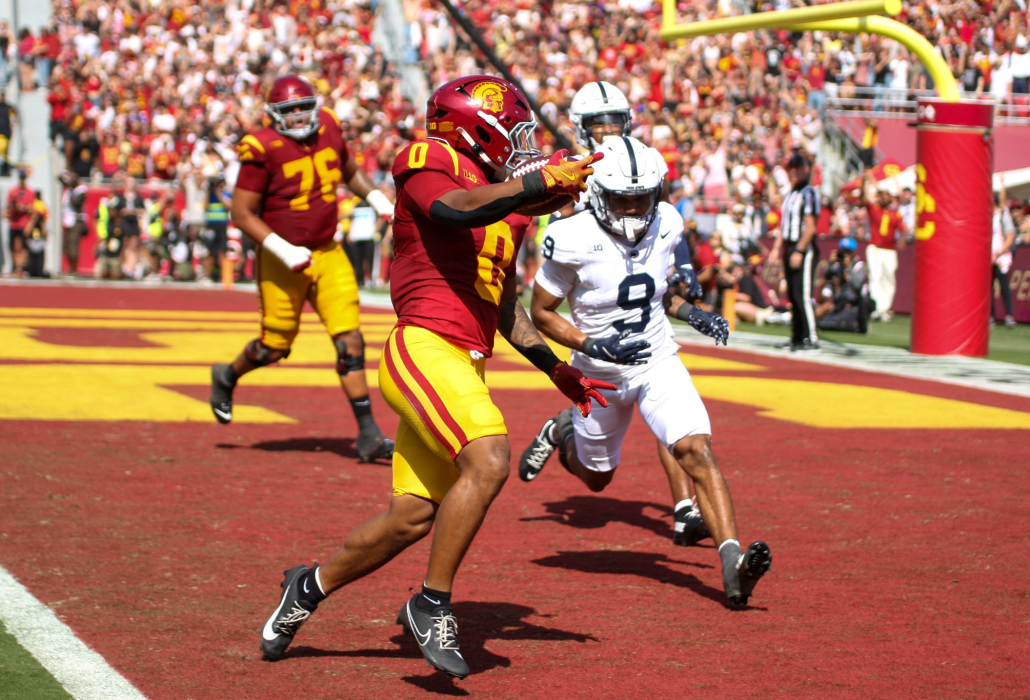Posted on 26 October 2024.
CECI HEINEN: Hello everyone! This is Ceci Heinen.
OWEN MCDONNELL: And Owen McDonnell with the Minnesota Daily.
BOTH: And you are listening to In The Know, a podcast dedicated to the University of Minnesota.
HEINEN: We are less than a week out from Halloween, one of the most widely celebrated holidays in America, with around 70% of Americans planning to celebrate on the 31st of October. For college students, Halloween is not only celebrated on the day of. Many choose to take part in Halloweekend, which, to put it simply, is a three, sometimes four night bender, for those who choose to participate.
MCDONNELL: Throughout the month leading up to Halloween, students plan their costumes, watch scary movies, carve pumpkins and do all the typical traditions associated with Halloween. But how did these traditions come to be? How did Halloween become such a widely celebrated American tradition? And, where did the idea of carving pumpkins, dressing as ghosts and witches and trick-or-treating even come from?
HEINEN: Lucky for you listeners, Owen and I did some digging. We spoke to experts in many different fields of study to try and understand the background of this mysteriously spooky holiday. Benjamin Hansen, a lecturer in the history department and expert in early Christianity, uncovered the medieval roots of the holiday.
BENJAMIN HANSEN: So Halloween comes out of a Christian tradition from 15/ 1,600 years ago of sort of trying to maintain relationships with the dead. And what do I mean by this? Well, in a lot of religions throughout the entire world, there’s this sense that the dead are still with us and we owe them something.
And maybe they owe us something and try to figure out how exactly to sustain those relationships. Early Christians start having feast days or holidays for at first martyrs. So, members of Christian communities that were killed for being Christians. And then that category sort of expands to what we would call saints and holy people for a variety of reasons.
These dates start filling the calendar. So, you know, this date is for this martyr, this date is for this martyr. And the calendar fills up actually rather quickly. So we know that sometime, probably in the 8th century C. E., so 1,200 years ago, there’s this feast established in Western Europe. A big church celebration feast called All Saints Day.
And it’s sort of like a catch all to try to make sure in some ways that we haven’t forgotten to celebrate one of the, what we’ll call them, the very special dead. Borrowing a phrase from a historian, Peter Brown, there’s the dead and then there’s the very special dead. And the very special dead have some powers.
MCDONNELL: So in medieval times, Christians celebrated All Saint’s Day to commemorate and pay tribute to the dead, but where does Halloween come in?
HANSEN: In fact, the name, the name Halloween, it’s sort of an old English direct translation. Well, what it really would be, would be All Saints Day’s Eve, just in the same way that we celebrate Christmas Eve.
So, you’ve got this word “hallow” in Old English, which is what people speaking Old English and related languages would use to interpret the word holy, which is related to our word saint, at least in meaning. So you’ve got the hallow there, and then what is this ween or “een”? Well, forget about the ween part, because the w belongs to the hollow.
And so we’ve just got this “een.” And what that is, is actually, originally we think that it was even, get our word evening, but it was said so often that parts of it dropped out. So this is Hallows Eve or All Saints Day Eve, which starts to be celebrated.
HEINEN: This all sounds fascinating to me, but when does this religious tradition for commemorating saints and martyrs get scary? What about trick-or-treating and costumes?
HANSEN: There was a tradition that was at least sort of going on in England, and Wales, and Ireland and some parts of sort of mainland Western Europe called souling.
And what you would do is that you would, apparently go around from place to place, door to door, and some way offer to pray for the soul of the departed, the not very special dead who needs some help. And in return for your prayers, you might get what was called a soul cake. And this is like a little piece of sweet bread with a cross on it.
MCDONNELL: Sweet bread was the medieval version of a king sized Snickers bar it seems. Hansen also described where costumes could have originated from.
HANSEN: That there may well have been, for churches that did not have access to relics, or in addition to going to find your saint’s relics, a tradition of dressing up as whatever saint you’re trying to celebrate. And then people say, “Aha, here’s maybe where we got dressing up from.”
Maybe, but you have this moving around from place to place, giving out of sweet treats, evidence of dressing up as saints. And maybe here in, in the Middle Ages, in Western Europe, do you have sort of like the, the seeds of what we do much later.
HEINEN: OK, so dressing up as a saint does not seem too frightening to me. Cue the skeletons, ghouls, witches and mummies! Hansen links the fear aspect of Halloween to the Black Plague, aka Black Death, which occurred from 1347 to 1351 in which a quarter of the European population died.
HANSEN: There’s so called Dance of Death which is sort of a motif that you find in medieval churches and in medieval manuscripts. A lot of the characters that you see, peasants and kings and kings and queens, people from the highest to the lowest, are depicted as sort of doing these crazy and creepy dances with skeletons.
This becomes a feature of late medieval literature, and it’s really popular, this idea of this dance with death. We think that after the Black Death, this great plague that sort of the last big thing that happens in the medieval period, that this became even more popular as, you know, death was everywhere and it was sort of maybe a way to deal with it.
And there’s a question as to whether how this dance with death coincides with other pageantry, dressing up as other things. And because we’re trying to think about, well, how did we get from imitating saints to dressing up as witches and ghosts and skeletons?
MCDONNELL: This brings us to the pagan Celtic holiday of Samhain, which has connections to modern Halloween as we know it today. Anatoly Liberman, a renowned professor in the department of German, Nordic, Slavic, and Dutch, who represents the German Scandinavian part of the department, expanded on Samhain.
He outlined the progression of the Celtic pagan holiday and how it made its way into the Christian sphere and eventually became known as Halloween.
ANATOLY LIBERMAN: It was pagan, and it was a typical seasonal festivity or event. And it was celebrated indeed when we are celebrating it now at the end of October, and it signified more or less the beginning of winter.
And like all seasonal holidays of this type, it was, if I can use a learned word, it was a liminal. Liminal means something having to do with a threshold. It was a liminal holiday, that is the change of one season and the beginning of another season. All kinds of rites and rituals are connected with this date.
First of all, it’s the end of the harvest. So that in many areas, especially in the north, some grain or some sheaf was left on the field for ghosts and for those who wanted to take it and not to be hungry. So all kinds of things. It was a ghostly thing because it was connected to the ghosts.
On such threshold days, all kinds of ghosts and apparitions used to come, and of course frighten people. So there were all kinds of things to stave them off, not to be frightened. On the one hand to be placated. On the other hand, to be warded off, to be kept away.
MCDONNELL: So that’s how it went on and on, and Europe became Christian, and the Church naturally didn’t like this story. But it’s practically impossible to make people forget their old rites and rituals, according to Liberman. So the church couldn’t do it, but it did a lot to eradicate their literature.
LIBERMAN: And in order to give a semblance of decency to a pagan holiday, it was called All Saints Day. So now it was not All Ghosts Day, but All Saints Day. That happened in the 7th century. So that’s the beginning of Halloween.
The rites and rituals are and were numerous and had absolutely nothing to do with our pumpkins. These things also change gradually. And the change to pumpkins and candles is very recent. Not more than 200 years ago in the Celtic world. Trick-or-treating and having all kinds of fancy dresses is really American.
HEINEN: In general, the holiday was forgotten in Europe, according to Liberman. And when the Irish came to the United States near the end of the 19th century, around the time of the Great Potato Famine, Halloween was revived.
LIBERMAN: So what we have now is not a direct continuation of what happened in the Celtic speaking world 2000 years ago, but it’s still very much Celtic because it was revived by the Irish.
And that’s the form which we have it now. So there are three stages here, something that is truly ancient, and which is connected with seasonal events with all the paraphernalia that goes along with it. Then the Christianization, when the church could not crush this festival, but could pretend that it was in honor of Jesus Christ.
So it was Christianized and fine, so it went on. Then it was more or less forgotten, and probably would have been forgotten, but for an unpredictable fact of immigration to the United States. Halloween became really an American event and that is how it stayed.
HEINEN: During his interview, Liberman came prepared with a note he found that was published in 1880 in England. This note gives a picture of what Halloween was like for Europeans in the 1800s. You may notice that instead of carving pumpkins, they carved turnips!
LIBERMAN: “In old days, children amuse themselves by making a death’s head by scooping out a turnip, cutting three holes for eyes and mouth and putting a lightened candle end inside from behind. A stake or old mop stick was then pointed with a knife and stuck into the bottom of the turnip and a death’s head with eyes of fire was complete. Sometimes a stick was tied across the mop stick and a shirt or sheet stretched over it to make it ghostly and ghastly.”
So you see, it’s a very familiar thing. The word Halloween is not mentioned in this note, but the picture is familiar to anyone who knows what Halloween is about. And it’s 1880, and that is pretty long ago as far as we’re concerned, but of course that’s not the beginning of Halloween.
MCDONNELL: As you can see, Liberman knows a heck of a lot about Halloween’s beginnings. But Halloween is not just a holiday in legends and history, it is still very important culturally in our world. Moving away from periods in history hundreds of years ago, let’s talk about something a little more recent. Nathanael Homewood, the associate director of religious studies and an expert in global Christianity here at the University, gave us some insight on how some sects of Christianity reject Halloween.
HOMEWOOD: So obviously, most Christians in America enjoy Halloween, but there is a significant minority that have had sort of a tortured relationship with Halloween over the last, probably since the late 1970s, up until recently. That minority is primarily evangelical Christians, but not exclusively.
Their uncomfortability with Halloween has led at times for them to wage real opposition to Halloween, including, and probably especially, trying to ensure that it is not part of school. So there has often been resistance to costume wearing at school and, or any event that might be related to Halloween.
Such folks usually avoid trick-or-treating. They have tried to come up with alternatives. So you will see things like harvest festivals that are held on church grounds, or you will see sometimes it’s called trunk-or-treating where they will do things in the church parking lot. And people can get candy out of the trunks of cars. But I think that the uncomfortability with Halloween, in this way, it probably stems from two arguments.
The first is a deep seated fear that Halloween is a glorification or glamorization of evil, of the demonic, of the satanic. You will hear folks or heard folks like Pat Robertson, and I’m loath to assume that what Pat Robertson says is necessarily representative of anything more than Pat Robertson himself, but he used to say very publicly that Halloween was a day when millions of children would celebrate and worship Satan.
So some of this stems from the late ’70s and early ’80s when there was the satanic panic. The satanic panic was a kind of hysteria that was very popular in the media. And it involved accusing, primarily daycare workers, of being devil worshippers who were operating within these daycare centers to indoctrinate children into satanism, into satanic cults, what have you.
HEINEN: Daycare workers accused of being devil worshippers? This sounds like something out of the Salem Witch Trials. What ended up happening with the accused?
HOMEWOOD: There were really real consequences around the satanic panics. I mean a number of daycare workers ended up in prison for sometimes considerable amounts of time. But during these satanic panics, not only was it about these specific daycare accusations and people who ended up being wrongly imprisoned, but it also created a real atmosphere of the fear of the satanic and people working on the behalf of Satan to take control of people.
Those satanic panics very much spilled over to a fear of things that sometimes are associated with Halloween. And so all of that is sort of the one piece of why folks were scared of Halloween. That it is a glorification or glamorization of evil.
MCDONNELL: They sure took daycare accusations seriously. That brings us to the second point — the uncomfortability with Halloween.
HOMEWOOD: Often they’ll make a much more historical argument, and again, not to say that this is necessarily an accurate historic representation, but the argument will be that it is a pagan holiday, and thus must be avoided.
Now, I’m not a historian, but I do know that Halloween is deeply embedded in Christianity. It obviously also has pagan elements and roots, the degree of which that is true. And I’m only using pagan in the sense of celebrations and religions here that Christians would designate as pagan. It’s not a particularly helpful term in the study of religion.
But it has some of those elements, but the degree to which it has non Christian elements is much more highly debatable than the Christian elements themselves. Regardless though, folks who are comfortable with Halloween will argue for its pagan origins, and will say that the things that are celebrated at Halloween are representative of things that are not Christian.
HEINEN: In his youth, Homewood personally experienced religious conflicts with Halloween and his family did not celebrate the holiday. However, now as an adult with a child, his Halloweens are looking a little different.
HOMEWOOD: So in my parents house, like throughout my childhood, we never came back to it. That was not an option growing up. Now that I’m old and have a child now, no yeah, we celebrate.
Like I said, we’re new to the area, but we noticed just about every house in our neighborhood has decorations. So my son did some decorations.
I’ve tried on my dino costume for this year, so we’re good to go.
MCDONNELL: Along with Homewood’s unique experience with Halloween, Liberman also had an intriguing relationship with the holiday. He never even knew it existed until he moved to America!
LIBERMAN: I had never heard the word, no. That was long, long ago. There were very many American words that I never heard in Russia where I was born, so I had to learn them.
Came here 50 years ago. And it was in, at the end of August, and very soon they said that there will be Halloween soon, and I said, “What is Halloween?” They were surprised, “You don’t know what Halloween is?” It’s like asking you don’t know what a car is or something like that.
Well, and now, of course, after so many years, everything except for my accent is totally Americanized, and I’ve been teaching American students for half a century. So, it’s quite part of my psyche and of my life. Halloween, like Thanksgiving, again, something that I learned only when I came to this country and had no idea that such a thing existed.
The turnip, yes, we’ll put the turnip in front of our house to show our loyalty to the rest of the world, rather than for any other reason, not to be different from everybody else.
HEINEN: Hansen has, well, bittersweet thoughts about the evolution of Halloween.
HANSEN: It used to be a much broader diversity of candy. It’s just like, I think it’s the diversity of candy has shrunk by 50%. OK, you do get people who hand out giant candy bars and they’re nice, but, it doesn’t make up for not getting the weird stuff anymore.
There were a lot more sort of standard pirate, cowboy, princess costumes that were not related to a specific Disney or Marvel series. And it’s like, it’s just like, I’m just an old man yelling, “Get off my lawn,” which is ironic in the Halloween context. So like a wider, interesting variety of sometimes homemade costumes that are gone away.
And then here’s the worst thing. Those damn inflatable decorations, like the big glowing inflatable ones that blow over in the wind. I miss scarecrows and just normal pumpkins.
MCDONNELL: So now you know. Halloween has been a thing for hundreds of years and will continue to be celebrated for years to come. And now that you’ve heard the whole story, maybe you’ll think about the Dance of Death or All Saint’s Day when you’re standing in the cold line of Sally’s Saloon Halloweekend. Who knows, maybe you’ll dress up as a turnip or a daycare nurse!
HEINEN: This episode was written by Ceci Heinen and Owen McDonnell and was produced by Kaylie Sirovy. We appreciate you tuning into this week’s spooky podcast and feel free to send a message to our email inbox at podcasting@mndaily.com with any questions, comments or concerns. Thank you for tuning in. Again, I am Ceci Heinen.
MCDONNELL: And I am Owen McDonnell, and this has been In The Know. Happy trick-or-treating and stay safe this Halloween.






 PINNED
PINNED








